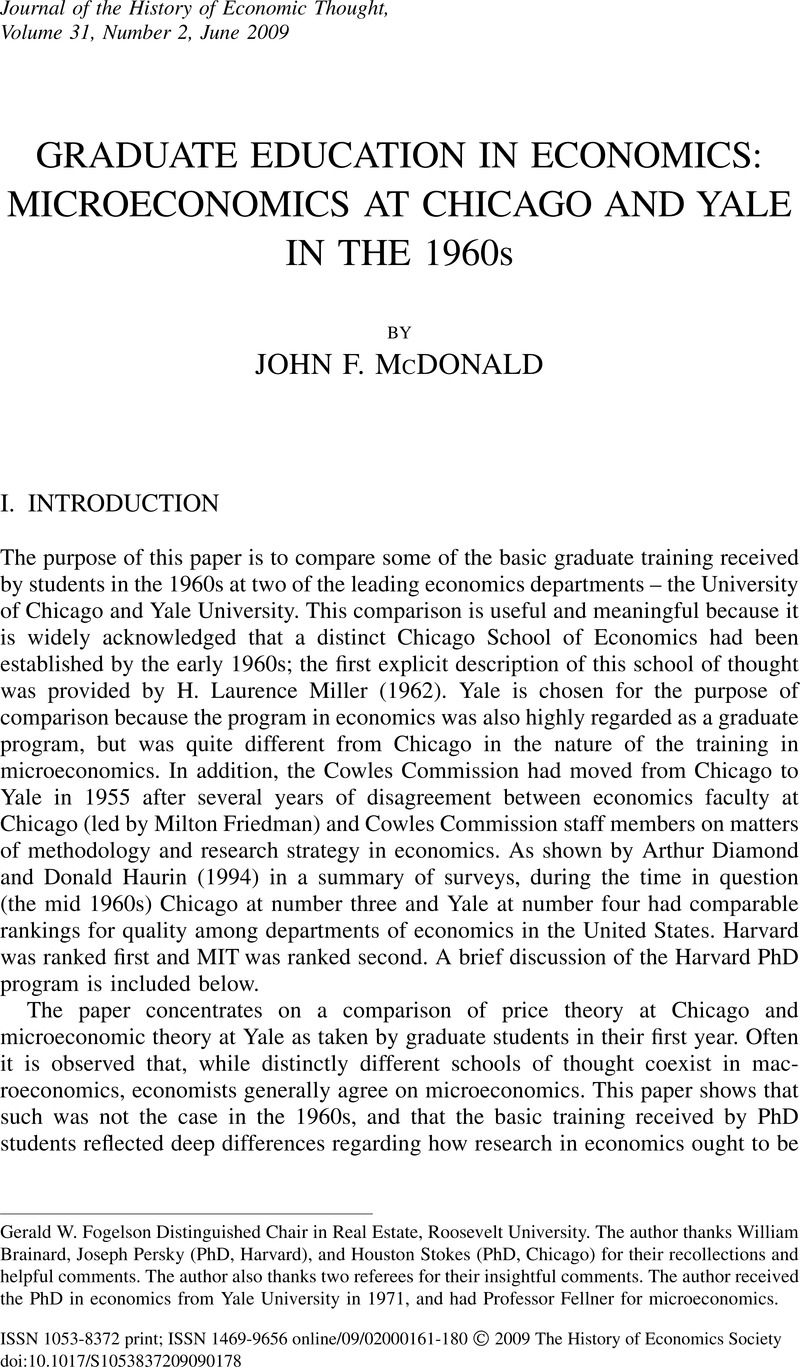Crossref Citations
This article has been cited by the following publications. This list is generated based on data provided by Crossref.
Nik-Khah, Edward
2011.
Building Chicago Economics.
p.
116.
Campbell, Arthur
Feinstein, Jonathan S.
Hong, Soonwook
Qian, Sharon
and
Williams, Trevor C.
2017.
Diversity, knowledge clusters, and job placement: Graduate economics teaching of core microeconomics.
The Journal of Economic Education,
Vol. 48,
Issue. 3,
p.
146.



